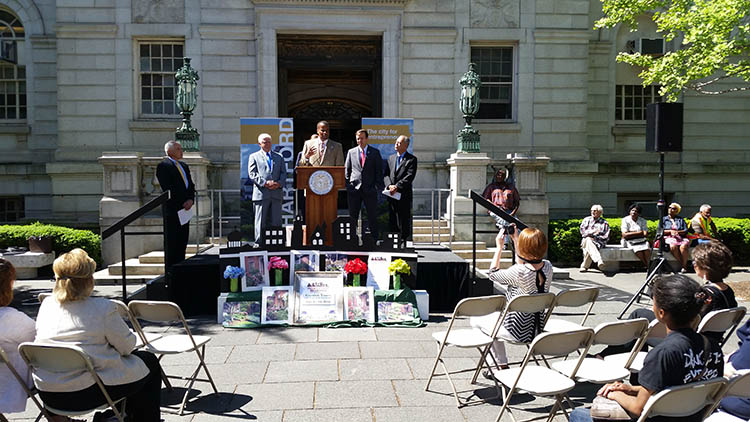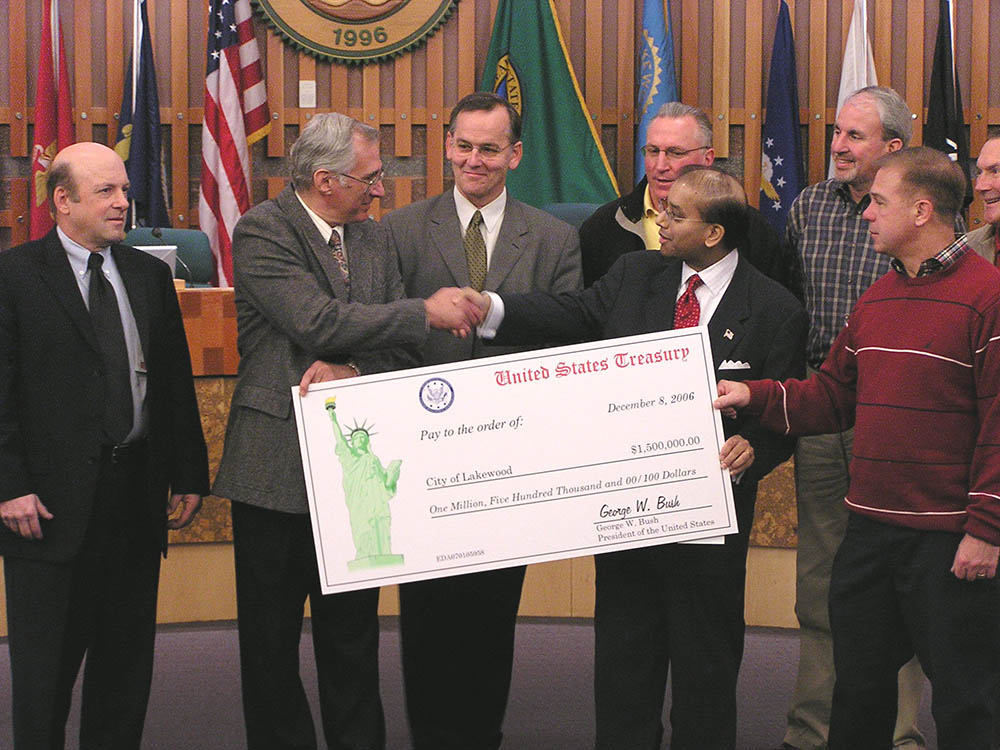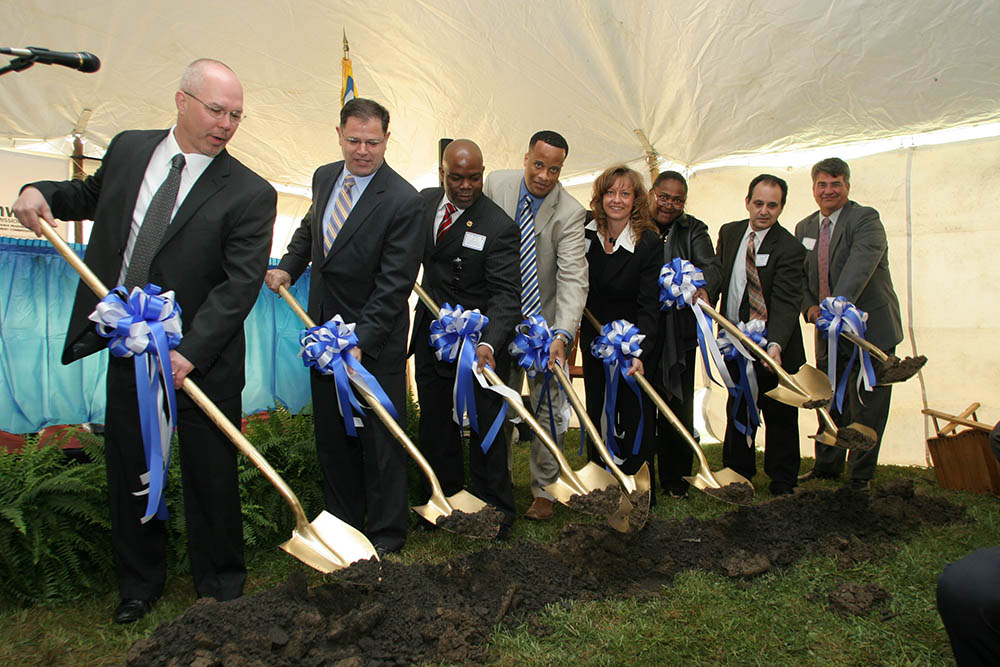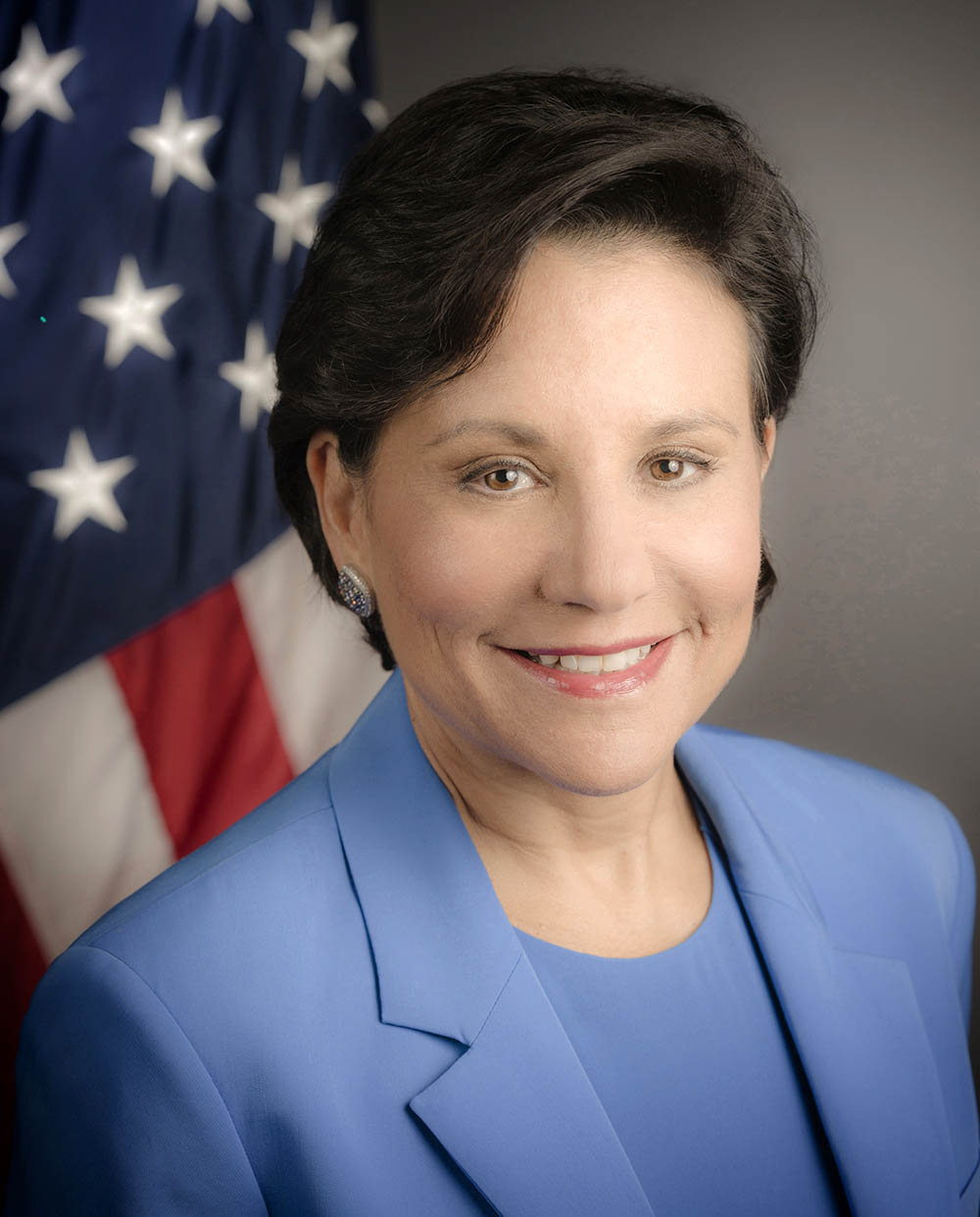August 31, 2015
 Ten years ago, Hurricane Katrina devastated the Gulf Coast. More than 1,200 people died tragically, and property damage is estimated to have been more than $108 billion. In the ten years since the flood waters subsided, the people of the Gulf Region have demonstrated incredible resiliency and a strong will to restore the area to the vibrant, bustling community it was before the storms hit. That meant not only repairing the physical damage left by the storm, but working to repair the economic havoc the storm wreaked. The U.S. Department of Commerce’s International Trade Administration (ITA) and Economic Development Administration (EDA) are proud to be partners in those efforts.
Over the last decade, EDA has invested more than $32 million, and in the immediate aftermath of the storm, invested nearly $10 million in seven separate projects throughout the region, including supporting strategic capacity rebuilding and counseling for affected small business owners. More than 40 ITA Commercial Service employees volunteered to help in the Gulf immediately following the storm, turning a Trade Information Center into a call center for affected businesses. The volunteers worked proactively with state and local officials to develop export seminars, trade missions, and other business promotion programs.
Ten years ago, Hurricane Katrina devastated the Gulf Coast. More than 1,200 people died tragically, and property damage is estimated to have been more than $108 billion. In the ten years since the flood waters subsided, the people of the Gulf Region have demonstrated incredible resiliency and a strong will to restore the area to the vibrant, bustling community it was before the storms hit. That meant not only repairing the physical damage left by the storm, but working to repair the economic havoc the storm wreaked. The U.S. Department of Commerce’s International Trade Administration (ITA) and Economic Development Administration (EDA) are proud to be partners in those efforts.
Over the last decade, EDA has invested more than $32 million, and in the immediate aftermath of the storm, invested nearly $10 million in seven separate projects throughout the region, including supporting strategic capacity rebuilding and counseling for affected small business owners. More than 40 ITA Commercial Service employees volunteered to help in the Gulf immediately following the storm, turning a Trade Information Center into a call center for affected businesses. The volunteers worked proactively with state and local officials to develop export seminars, trade missions, and other business promotion programs.
> Read more
August 20, 2015
 The Strong Cities, Strong Communities (SC2) Economic Visioning Challenge (EVC) is an innovative prize competition designed to engage diverse teams to help U.S. cities generate tailored economic development plans. The SC2 EVC is sponsored by the U.S. Commerce Department’s Economic Development Administration (EDA) and administered by three selected cities:
The Strong Cities, Strong Communities (SC2) Economic Visioning Challenge (EVC) is an innovative prize competition designed to engage diverse teams to help U.S. cities generate tailored economic development plans. The SC2 EVC is sponsored by the U.S. Commerce Department’s Economic Development Administration (EDA) and administered by three selected cities:
EDA awarded each of the three cities $1 million in 2012 to launch their competitions. In Phase 1, which was completed in December 2014, Greensboro, Hartford, and Las Vegas awarded a total of $300,000 in small prizes for the best preliminary economic development proposals. A total of 143 teams registered across all three cities, and 26 were selected as Phase 2 finalists.
> Read more
August 2015 Newsletter
|
 Photo Caption: Then Assistant Secretary Baruah presenting a $1.5 million check tothe City of Lakewood
Photo Caption: Then Assistant Secretary Baruah presenting a $1.5 million check tothe City of Lakewood
“My time at EDA was a rewarding professional experience. I had the opportunity to work with many dedicated and smart public servants working hard to make economic opportunity more available to more Americans – and that is a goal that everyone can applaud.” – Sandy Baruah, EDA Assistant Secretary 2005-2008
|
|
 Photo Caption: Then Assistant Secretary John Fernandez at a ground-
breaking with future (and current) Assistant Secretary
Jay Williams in Hermitage, PA
Photo Caption: Then Assistant Secretary John Fernandez at a ground-
breaking with future (and current) Assistant Secretary
Jay Williams in Hermitage, PA
“Happy 50th Birthday EDA! As a former Assistant Secretary for Economic Development I’m honored to have been part of this legacy change for America’s most economically challenged regions. Since its inception in 1965, EDA's transformative investments have been helping create jobs and build more competitive communities. Today, EDA's Regional Innovation Strategies program, including the i6 Challenge, continue this important work levering private-public partnerships to accelerate innovation and job creation across America.” – John Fernandez, EDA Assistant Secretary 2009-2012
|
> Read more
August 2015 Newsletter
 Economic development has been around since the early 1900s, but controlled primarily by the private sector. Banks, railroads, utilities, and businesses largely led economic development activities based purely on increasing profits. All that changed in 1933 when the federal government decided to adopt a stronger, more comprehensive federal role in economic development. The result was increased federal investment in the public good to help build capacity and avoid a private-sector monopoly on America’s infrastructure.
Economic development has been around since the early 1900s, but controlled primarily by the private sector. Banks, railroads, utilities, and businesses largely led economic development activities based purely on increasing profits. All that changed in 1933 when the federal government decided to adopt a stronger, more comprehensive federal role in economic development. The result was increased federal investment in the public good to help build capacity and avoid a private-sector monopoly on America’s infrastructure.
By the mid-20th century, there was a growing realization that economic development had to include more than just investing in infrastructure to help address socioeconomic inequities. On August 26, 1965, President Lyndon Johnson took the first step by signing the Public Works and Economic Development Act, authorizing the creation of the Economic Development Administration (EDA) to help stimulate industrial and commercial growth in distressed communities across the nation.
> Read more
August 2015 Newsletter
 This month, we commemorate the 50th anniversary of the founding of the Economic Development Administration. It’s an occasion that offers an opportunity to reflect on all of the great work the agency has done and the impact it has had. But, August 2015 also marks the 50th anniversary of a darker event – the Watts Riots. Over six days, the riots resulted in 34 deaths, more than 1,000 injuries, 3,400 arrests, and more than $40 million in property damage. Rebuilding the community and its economy would be a massive undertaking, and thankfully there was a newly created federal agency designed to help communities rebuild their economies.
This month, we commemorate the 50th anniversary of the founding of the Economic Development Administration. It’s an occasion that offers an opportunity to reflect on all of the great work the agency has done and the impact it has had. But, August 2015 also marks the 50th anniversary of a darker event – the Watts Riots. Over six days, the riots resulted in 34 deaths, more than 1,000 injuries, 3,400 arrests, and more than $40 million in property damage. Rebuilding the community and its economy would be a massive undertaking, and thankfully there was a newly created federal agency designed to help communities rebuild their economies.
Following the riots, Watts was designated as a “Special Impact Area.” This designation enabled EDA to help fund the creation of the Economic Resources Corporation (ERC), which was established in 1968 to continue economic development works and projects in the Watts community. Even from its early days, EDA understood that economic development projects should be driven locally and run by the community, and the region needed an organization committed to doing that driving.
> Read more
August 2015 Newsletter
 I am honored and privileged to serve as Assistant Secretary for this incredible agency and to shepherd EDA into its 50th year. As we’ve prepared to commemorate 50 years of EDA investments, leadership, and successes, we’ve had the opportunity to look back. I’ve enjoyed hearing from our long-time staff that has shared stories about EDA’s past. I hope you are enjoying the historic photos we have shared on Facebook and Twitter and in this newsletter. It’s been a nice time of reflection, but it also provides an opportunity to look forward.
I am honored and privileged to serve as Assistant Secretary for this incredible agency and to shepherd EDA into its 50th year. As we’ve prepared to commemorate 50 years of EDA investments, leadership, and successes, we’ve had the opportunity to look back. I’ve enjoyed hearing from our long-time staff that has shared stories about EDA’s past. I hope you are enjoying the historic photos we have shared on Facebook and Twitter and in this newsletter. It’s been a nice time of reflection, but it also provides an opportunity to look forward.
EDA has an incredible and storied history, but it’s got an even more promising future. From critical public works projects to helping fledgling new companies commercialize their products, EDA has, and continues to, partner with communities to support their unique needs. EDA’s role as a convener on multi-agency initiatives, such as IMCP and POWER, is helping revolutionize federal programs by breaking down silos and leveraging economies of scale.
EDA’s future is bright. With your continued support and partnership, I can say with certainty that there will be even more to celebrate over the next 50 years.
Jay
> Read more
August 2015 Newsletter
> Read more
August 4, 2015
These days, there is a lot of talk about “innovation hubs.” When people think about innovation, many think about tech-heavy areas like Silicon Valley or Austin, Texas with young start-up CEOs in jeans and a hoodie. Or they think of big cities like Boston and Atlanta where giant companies invest in research and development for the next scientific breakthrough.
However, rural areas can also be centers of innovation – places like Alaska, where the Cold Climate Housing Research Center is revolutionizing how people can heat their homes efficiently in the Arctic Circle, where energy costs can be staggering.
> Read more
 Ten years ago, Hurricane Katrina devastated the Gulf Coast. More than 1,200 people died tragically, and property damage is estimated to have been more than $108 billion. In the ten years since the flood waters subsided, the people of the Gulf Region have demonstrated incredible resiliency and a strong will to restore the area to the vibrant, bustling community it was before the storms hit. That meant not only repairing the physical damage left by the storm, but working to repair the economic havoc the storm wreaked. The U.S. Department of Commerce’s International Trade Administration (ITA) and Economic Development Administration (EDA) are proud to be partners in those efforts.
Over the last decade, EDA has invested more than $32 million, and in the immediate aftermath of the storm, invested nearly $10 million in seven separate projects throughout the region, including supporting strategic capacity rebuilding and counseling for affected small business owners. More than 40 ITA Commercial Service employees volunteered to help in the Gulf immediately following the storm, turning a Trade Information Center into a call center for affected businesses. The volunteers worked proactively with state and local officials to develop export seminars, trade missions, and other business promotion programs.
Ten years ago, Hurricane Katrina devastated the Gulf Coast. More than 1,200 people died tragically, and property damage is estimated to have been more than $108 billion. In the ten years since the flood waters subsided, the people of the Gulf Region have demonstrated incredible resiliency and a strong will to restore the area to the vibrant, bustling community it was before the storms hit. That meant not only repairing the physical damage left by the storm, but working to repair the economic havoc the storm wreaked. The U.S. Department of Commerce’s International Trade Administration (ITA) and Economic Development Administration (EDA) are proud to be partners in those efforts.
Over the last decade, EDA has invested more than $32 million, and in the immediate aftermath of the storm, invested nearly $10 million in seven separate projects throughout the region, including supporting strategic capacity rebuilding and counseling for affected small business owners. More than 40 ITA Commercial Service employees volunteered to help in the Gulf immediately following the storm, turning a Trade Information Center into a call center for affected businesses. The volunteers worked proactively with state and local officials to develop export seminars, trade missions, and other business promotion programs.


 The
The  Photo Caption: Then Assistant Secretary Baruah presenting a $1.5 million check tothe City of Lakewood
Photo Caption: Then Assistant Secretary Baruah presenting a $1.5 million check tothe City of Lakewood
 Photo Caption: Then Assistant Secretary John Fernandez at a ground-
breaking with future (and current) Assistant Secretary
Jay Williams in Hermitage, PA
Photo Caption: Then Assistant Secretary John Fernandez at a ground-
breaking with future (and current) Assistant Secretary
Jay Williams in Hermitage, PA
 Economic development has been around since the early 1900s, but controlled primarily by the private sector. Banks, railroads, utilities, and businesses largely led economic development activities based purely on increasing profits. All that changed in 1933 when the federal government decided to adopt a stronger, more comprehensive federal role in economic development. The result was increased federal investment in the public good to help build capacity and avoid a private-sector monopoly on America’s infrastructure.
Economic development has been around since the early 1900s, but controlled primarily by the private sector. Banks, railroads, utilities, and businesses largely led economic development activities based purely on increasing profits. All that changed in 1933 when the federal government decided to adopt a stronger, more comprehensive federal role in economic development. The result was increased federal investment in the public good to help build capacity and avoid a private-sector monopoly on America’s infrastructure. This month, we commemorate the 50th anniversary of the founding of the Economic Development Administration. It’s an occasion that offers an opportunity to reflect on all of the great work the agency has done and the impact it has had. But, August 2015 also marks the 50th anniversary of a darker event – the Watts Riots. Over six days, the riots resulted in 34 deaths, more than 1,000 injuries, 3,400 arrests, and more than $40 million in property damage. Rebuilding the community and its economy would be a massive undertaking, and thankfully there was a newly created federal agency designed to help communities rebuild their economies.
This month, we commemorate the 50th anniversary of the founding of the Economic Development Administration. It’s an occasion that offers an opportunity to reflect on all of the great work the agency has done and the impact it has had. But, August 2015 also marks the 50th anniversary of a darker event – the Watts Riots. Over six days, the riots resulted in 34 deaths, more than 1,000 injuries, 3,400 arrests, and more than $40 million in property damage. Rebuilding the community and its economy would be a massive undertaking, and thankfully there was a newly created federal agency designed to help communities rebuild their economies. I am honored and privileged to serve as Assistant Secretary for this incredible agency and to shepherd EDA into its 50th year. As we’ve prepared to commemorate 50 years of EDA investments, leadership, and successes, we’ve had the opportunity to look back. I’ve enjoyed hearing from our long-time staff that has shared stories about EDA’s past. I hope you are enjoying the historic photos we have shared on Facebook and Twitter and in this newsletter. It’s been a nice time of reflection, but it also provides an opportunity to look forward.
I am honored and privileged to serve as Assistant Secretary for this incredible agency and to shepherd EDA into its 50th year. As we’ve prepared to commemorate 50 years of EDA investments, leadership, and successes, we’ve had the opportunity to look back. I’ve enjoyed hearing from our long-time staff that has shared stories about EDA’s past. I hope you are enjoying the historic photos we have shared on Facebook and Twitter and in this newsletter. It’s been a nice time of reflection, but it also provides an opportunity to look forward.